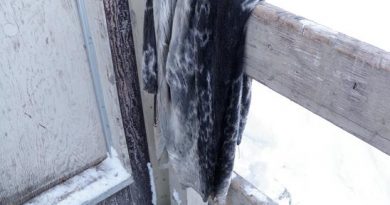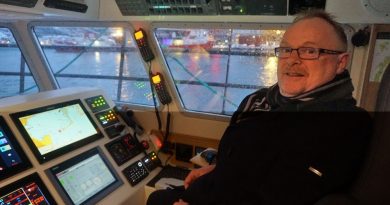Blog – Hot times ahead as oil-fuelled Russia chairs the Arctic Council and polar warming picks up pace
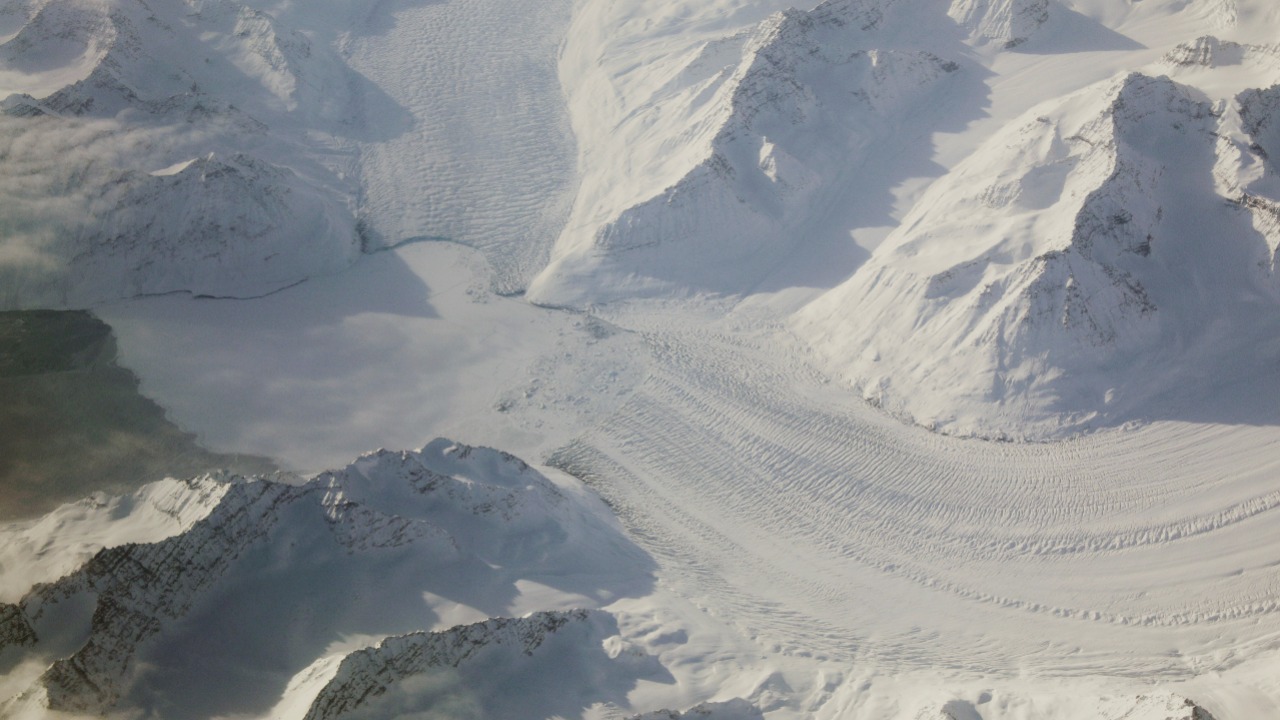
The bi-annual Ministerial Meeting of the Arctic Council in Reykjavik, Iceland, on May 20th attracted a lot of media interest – not least because the new US Secretary of State Antony Blinken was attending, alongside Russian foreign Minister Sergey Lavrov.
This is one arena where the two rivals and Cold War adversaries come together as partners, cooperating to ensure stability and well-being in an area shared by nations and Indigenous peoples. As the Arctic Council celebrates its 25th anniversary, this was its first in-person meeting since the onset of COVID. Russia takes over the rotating chairmanship from Iceland for the next two years, at a crucial time, with climate change dominating the Arctic and international agenda.
The Arctic Council is an international forum made up of the eight circumpolar nations: Canada, Denmark (Greenland), Finland, Iceland, Norway, Sweden, Russia, United States and six Arctic Indigenous groups, the “Permanent Participants”: Aleut International Association, Arctic Athabaskan Council, Gwich’in Council International, Inuit Circumpolar Council, Russian Association of Indigenous Peoples of the North and the Saami Council. It was set up in 1996 to work together on environmental protection and sustainable development.
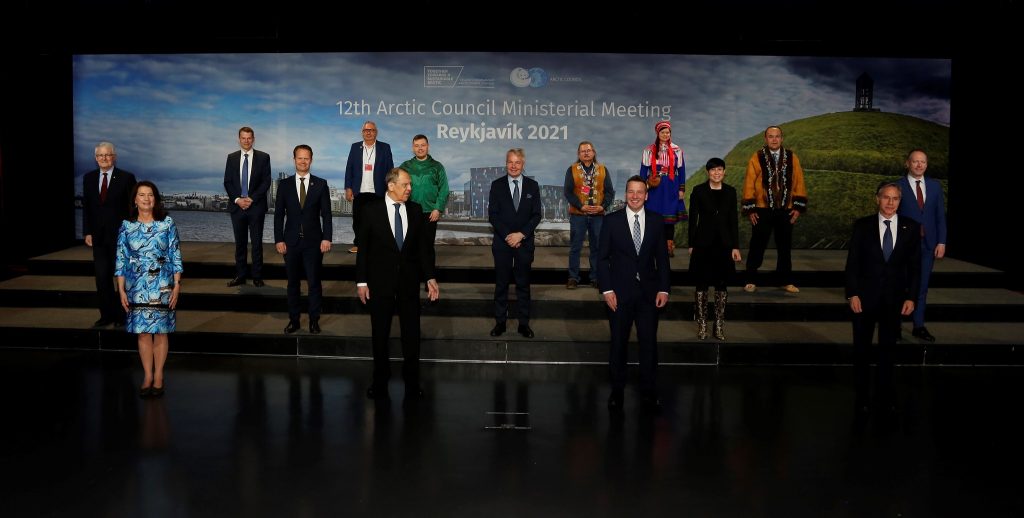
The climate factor
The Arctic has been gaining in international interest, with climate change impacts opening up the region rich in natural resources on the one hand, and at the same time a growing awareness of the significance of melting ice and thawing permafrost for the global climate. Countries vie to be granted “observer status” and have a seat – at least on the sidelines, if not right up at the table.
The good news from the Reykjavik meeting: since the departure of Donald Trump and the appointment of Joe Biden as US President, climate change is back on the Arctic Council agenda – and right at the top. At the last ministerial meeting, in 2019 in Rovaniemi in Finland, the US Secretary of State Mike Pompeo refused to accept any mention of the term “climate change” in the Ministerial Declaration, so that, for the first time ever, none was issued. This time around, Secretary of State Blinken brought the climate issue along as a priority.
Had a moment to see a breathtaking view of Greenland’s ice caps and fjords. Unfortunately, Arctic warming threatens these views, and more importantly, the surrounding communities’ livelihoods. We must act to address the climate crisis. pic.twitter.com/0oqPSd2mcJ
— Secretary Antony Blinken (@SecBlinken) May 21, 2021
The not-so-good-news from Reykyavik: climate change is hitting the Arctic even faster than previously estimated. At the ministerial meeting, the Arctic Monitoring and Assessment Programme (AMAP) presented their Arctic Climate Change Update 2021, showing climate change is now hitting the Arctic at three times rather than twice the pace of the global average.
The #ArcticMinisterial2021 stresses the importance of achieving the #ParisAgreement goals and calls all parties to implement and enhance measures to reduce #climatechange. See why this is utterly important for the #Arctic and for the #World: https://t.co/1olkq491qp
— AMAP (@AMAP_Arctic) May 20, 2021
In the closing Reykjavik Declaration, the Ministers note, “with utmost concern”, that this warming is having harmful effects on “the environment, biodiversity, society and infrastructure, as well as on subsistence-based livelihoods of many Arctic communities”. They also recognize that black carbon is accelerating the melting of snow and ice and intensifying the adverse effects of climate change and “reiterate the need for enhanced action to meet the long-term temperature goal and effective implementation of the Paris Agreement”.
The science appeared to be illustrated in real time as record temperatures and unseasonal, early fires were recorded across the Arctic.
It reached +30°C (86.5°F) in the Arctic today. Hotter than pretty much all of Europe right now.
Truly exceptional for any time of the year but mind-boggling for May. More updates to follow. pic.twitter.com/2CTTykUW3F
— Scott Duncan (@ScottDuncanWX) May 19, 2021
The 25th Anniversary was marked by the adoption of the first ever Strategic Plan of the Arctic Council, to cover 10 years and improve on the old system of two-year programmes, set by the respective nation in the chair, in rotation. Forward planning, continuity can only be a good idea. The director of WWF Arctic Progamme, Dr. Peter Winsor, welcomed the plan, which would “improve the transparency and accountability of the Arctic Council and provide more stability and continuity.”
But the content of the paper is very general. Heather Exner-Pirot, Managing Editor of the Arctic Yearbook, a Fellow at the Macdonald Laurier Institute and a Global Fellow at the Woodrow Wilson International Center for Scholars entitled a blog post for Eye on the Arctic: “The Arctic Council is back on track… or is that a rut?” Her take on the new document:
“The long awaited, and first, strategic plan of the Arctic Council is a beautifully written, entirely predictable affirmation of everything the forum does already… One could create a template for each Ministerial’s press release, with the location, Chair, and number of deliverables changing, but the fundamentals remaining largely the same. Steady as she goes.“
Russian Rhetoric?
It is the second time in the quarter of a century of the organisation’s history, that Russia holds the rotating chairmanship. Is this good or bad news for the climate? If it means Russia will get on board to shift the Arctic development agenda away from drilling for gas and oil towards protecting the fragile and unique Arctic environment from pollution and global warming, that would be fantastic news. But it’s a big if. And – OK – a lot of wishful thinking.
In Russia’s programme for the coming two years, we read:
“Russia, whose territory covers almost one third of the Arctic with more than 2.5 million inhabitants, is implementing a comprehensive integrated program for the development of the High North. We therefore intend to focus Russia’s Arctic Council Chairmanship on integrating into the Arctic Council activities the principle of promoting sustainable development in a balanced way – in its social, economic and environmental dimensions”.
But what is “sustainable development”, in the view of the fossil-fuel-based Russian economy? The statement notes the region’s “growing positive potential” in respect of “sustainable growth in the Arctic”. It goes on:
“It is important to be mindful not only of its vulnerability in the face of climate change but also of its prospects and capability, owing to its natural, energy and transport resources, to substantially contribute to energy transition to an environmentally neutral economy and, accordingly, to the fulfillment of goals and objects of the 2015 Paris Agreement.”
It is hard not to see a few potential contradictions here. How are the “opportunities” and “resources” offered by a warming Arctic going to be exploited without further exacerbating climate change? How is Moscow going to lead the Arctic nations to fulfill the Paris Agreement goals without fundamentally changing the oil and gas economy on which the country’s prosperity is based? Will it submit adequate, new goals itself to the UN before the COP26 climate conference in Scotland at the end of the year?
The Reykjavik Declaration signed by the Foreign Ministers includes:
“Stressing the importance of achieving the Paris Agreement goals and, in that regard, calling upon all parties to the Paris Agreement, including Arctic States and Arctic Council Observer States, to implement and enhance nationally determined contributions and other measures in line with the Paris Agreement goals”.
That includes a hint to the world’s biggest emitter, China, which received observer status at the Arctic Council in 2013. In 2018, Beijing announced plans to build the “Polar Silk Road” — a network of Arctic shipping routes. It has also previously referred to itself as a “near-Arctic state,” a proposition which created quite a lot of controversy. The country’s enhanced activity in the high north has evoked a lot of suspicion.
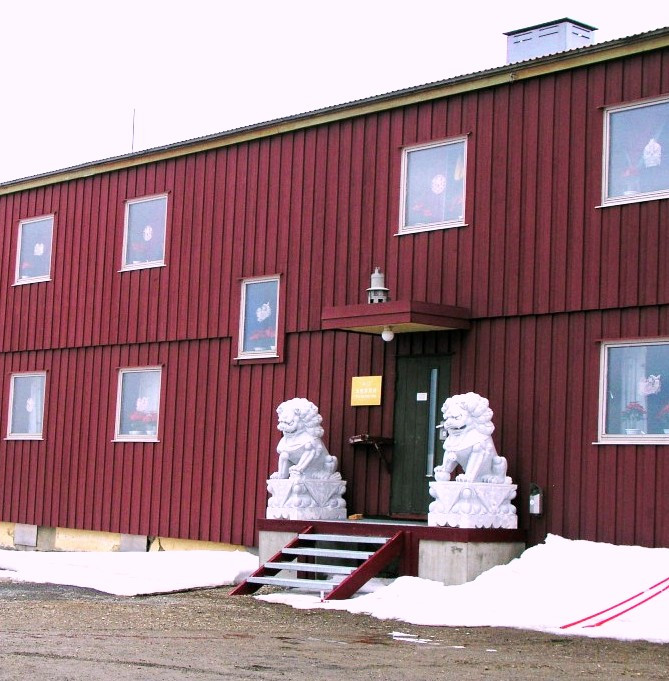
“Stressing” the importance of Paris and “calling upon all parties” is easy rhetoric. But the Arctic energy players have to put their words into action, not just pay lip service. The USA, the 2nd-biggest emitter after China, has upped its goals since Joe Biden came to office and took the country back into the Paris Agreement. Russia still has plenty of homework to do.
Clean energy is to be high on the Russian agenda. Again, it remains to be seen how this fits in with Russia’s oil and gas interests. Not that Moscow is the only Arctic Council member with a problem here. The USA, Canada and Norway, for instance, all have their own interests in that sector.
As Jan Dusik from WWF’s Arctic Programme put it:
“We are encouraged that Arctic states are once again acknowledging the climate crisis is a real and present danger. Their commitments to renewable energy development in Arctic communities and a 25-30 per cent reduction of black carbon emissions by 2025 are all positive steps. But the temptation of tapping into fossil fuel reserves and their failure to provide a concrete vision for how they will work together to achieve a carbon neutral Arctic are very concerning.”
On thin ice – or sagging permafrost
Russia finds itself in a bit of a dilemma. On the one hand, there are the opportunities referred to above. Climate change is opening up areas previously inaccessible, laying them open to exploitation for fossil reserves now slumbering peacefully. At the same time, international climate action is a threat to an economy that relies on those outmoded forms of energy. The country is finding itself on thin ice – and on thawing permafrost. This is a major threat to infrastructure across the high north. President Putin has had to change his tune in recent years – from climate denial to acknowledgement. But so far this has not had much effect on the country’s fossil fuel follies.
Why do we care about #permafrost in the #climate system? These pools (gigatons C) show that permafrost is not the largest but stores more carbon than global vegetation. It is dynamic, readily exchanging w/ the atmosphere in a region warming ~4x faster than the global average. 1/ pic.twitter.com/K3wjaTabsZ
— Dr. Merritt Turetsky (@queenofpeat) February 24, 2021
When Russia puts the focus of its Arctic Council programme on sustainable development, it seems likely development is number one, followed by sustainable – a concept subject to definition and interpretation. If it includes drilling for and burning oil and gas, it seems to me problematic – to say the least.
In the Barents Observer of May 19, Thomas Nilsen reminds his readers:
“Last autumn, President Vladimir Putin put his signature under the document that outlines the country’s main Arctic priorities for the period until 2035. The new guiding document for the vast northern territories includes plenty of focus on oil, natural gas and shipping, and only few words about climate change and green energy.“
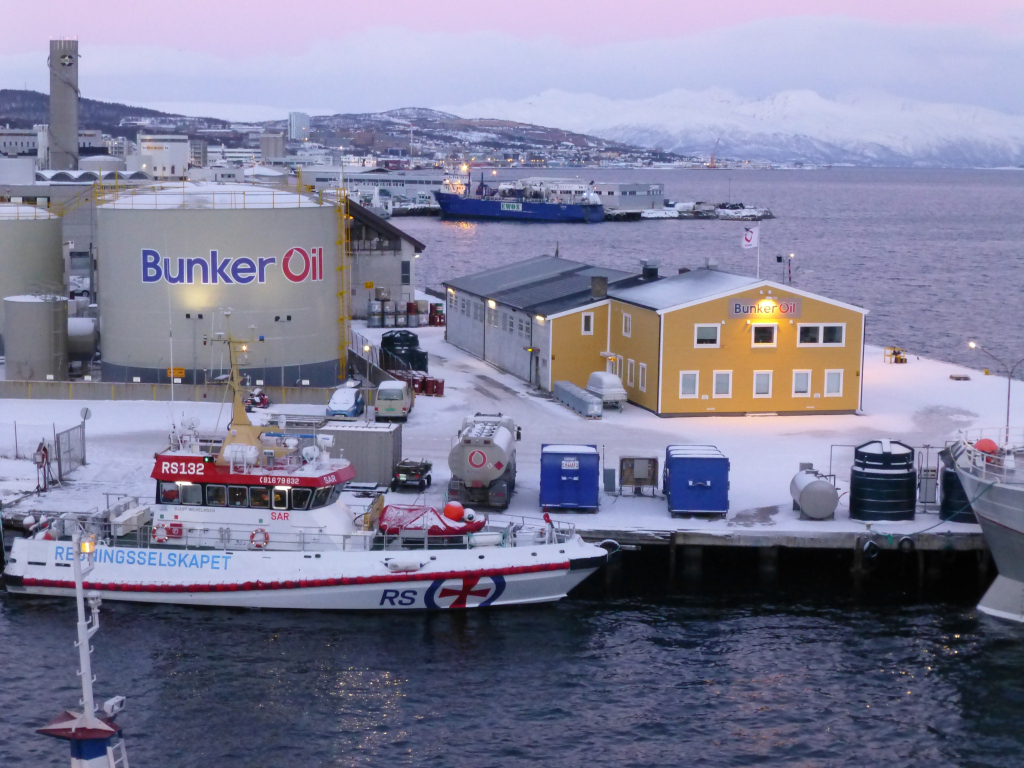
Power game
The northeastern sea route is one of Russia’s key development plans. It could shorten the distance to Asia by around a half compared with the route through the Suez Canal. Climate change is making it increasingly ice-free and navigable for several months a year. Russia wants to control it, and is investing in harbours and railways along the route. This does not appeal to the country’s “partners” in the Arctic Council, who are, of course, rivals when it comes to trade and governance systems. China, too, as mentioned earlier, wants to secure its influence on what could become a key trade route to Asia.
Here, at the latest, it becomes clear that security issues are playing out in the Arctic region. Military matters are traditionally kept out of the Arctic Council dealings. Annual meetings between armed forces chiefs from Arctic states were halted in 2014, after the annexation of Crimea. Russia has not participated in another forum, the Arctic Security Forces Roundtable, since 2014. Russia would like to change that.
Ironically, back in 2019, it was the US Secretary of State Mike Pompeo who introduced hard security issues to Arctic Council discussions, breaking a taboo that had been in existence since the forum’s founding.
Foreign Minister Lavrov said resuming an Arctic Council military dialogue would contribute to stability:
“It is therefore important to extend the positive relations we have within the Arctic Council to encompass the military sphere as well, first of all by revitalizing multilateral dialogue on military issues between the general staffs of the Arctic states”.
The outgoing council chair, Foreign Minister Gudlaugur Thor Thordarson, of Iceland, responded diplomatically:
“Everything that we can do as nations to lower tension and see stability is something that, of course, should be looked into very positively, but I think it’s important to keep the council as it is.”
However Lavrov later indicated that Russia would “carry on regardless”:
“We have not received any ‘no’s’ so far but we have not received any positive reaction, either,” Lavrov said. “So we have decided that within the next three years we will create the proper conditions so that this particular aspect of common security will once again be part of the work of the Arctic Council.”
It seems clear that Moscow would like to use its position as chair of the Arctic Council to re-normalize relations after the annexation of Crimea and the ongoing dispute with Ukraine.
There has been plenty of posturing on both the Russian and the Norwegian sides of the border – if military activities like base-building and manoeuvres can be described as posturing. Five of the Arctic Council states are NATO members, and Norway has controversially changed its own legal framework to allow the USA increased activities in its Arctic region.
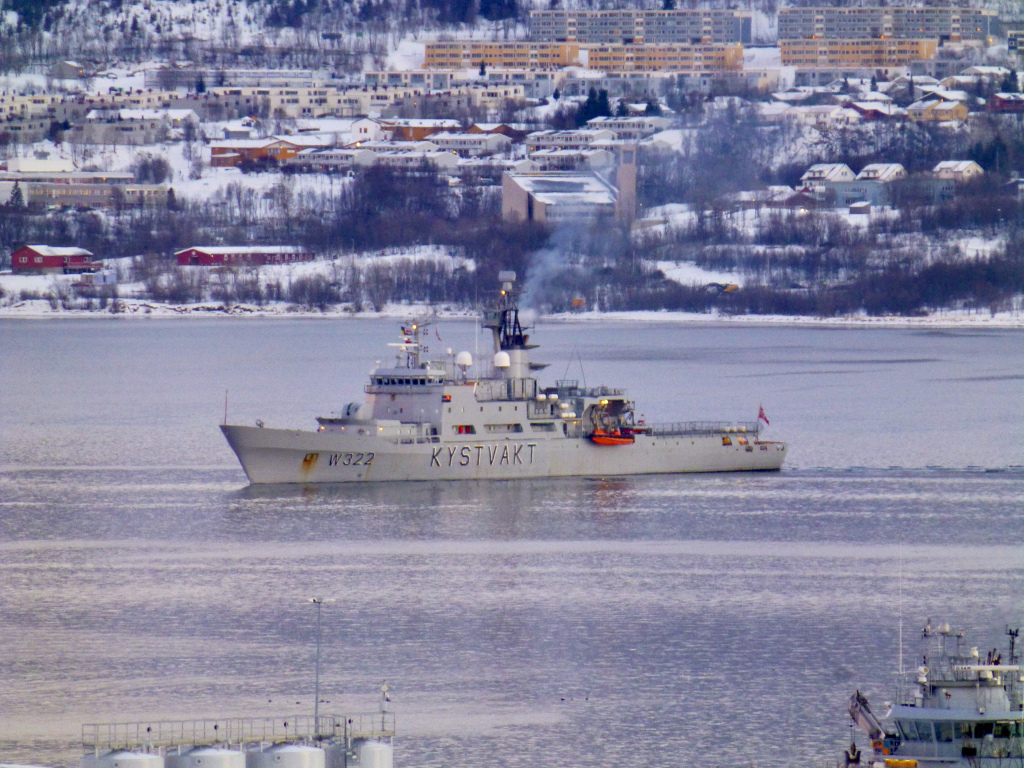
Competition and Cooperation
Canada’s Foreign Affairs Minister Marc Garneau in an interview with Eye on the Arctic after the Ministerial rejected Lavrov’s suggestion for defence meetings, but said this would not affect cooperation on climate and northern development under the Russian chairmanship:
“We’ve seen their strategic vision and things are looking good: the importance of the environment, people first who live in the Arctic, and sustainable development, which is very important for Canada. That’s the vision of the Russian strategy that’s presented going forward, and we think that’s the right approach…We want to ensure that a we move forward and adapt, because of climate change, that we try to minimize the effects of things such as black carbon, heavy fuel oils, plastics in our oceans, and taking care of the importance of fish stocks”.
Indigenous representatives, however, feel that their views are not being given enough attention: James Stotts of the Inuit Circumpolar Council said in his recorded address to the delegates: “What good is participation if no one listens and our concerns are not being paid the attention we think they should be? The current situation within the Arctic Council has become a concern for us.”
Stott expressed anxiety over the level of “recent angry and provocative rhetoric”. He added: “We do not want to see our homeland turned into a region of competition and conflict.”
Ultimately, climate change and security cannot be separated. Climate change has a security dimension. It is a destabilizing factor. It affects food supplies, water, transport, and will make some regions of the world unlivable. Cooperation is essential to ensure the battle for land and resources does not turn into full-blown conflicts between states or groups. The big question is whether the rival powers USA, Russia and China, can work together on climate change in spite of their geopolitical and systemic differences and struggle for economic predominance.
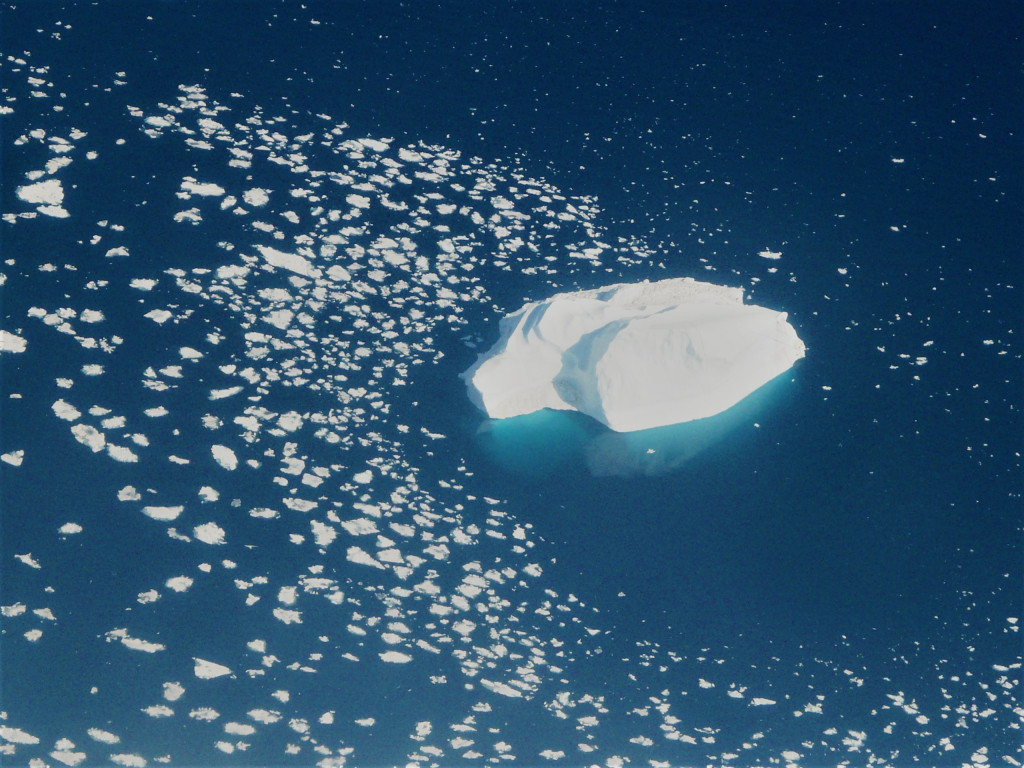
Climate action – from Reykayvik to Glasgow
The Council members want to draw increasing attention to the Arctic in international climate forums, including this year’s COP26 in Glasgow. Seems like a good idea? But if they want to do that with any credibility, the member states have to show in practice that they are willing to shift to green energy and respect nature. You can’t call for help for the Arctic and its peoples because they are suffering from climate change while continuing to pursue the activities that are causing the damage. A recent IEA report called on global leaders to drop all new plans to extract fossil fuels to reach net-zero emissions by 2050 and keep global warming below 1,5°C. That has major consequences for the targets all countries will (or should) put on the table in November.
The Arctic Council itself is not the venue where climate policies of individual members are decided. But the Arctic is one of the regions of the world where the effects of those policies are most evident. The impacts of greenhouse gas emissions are concentrated in the high north. The Arctic is at the heart of the climate crisis. There is increasing public attention to the fact that even the icy bastions of the planet are not immune to warming – and that this will have dire consequences for even the least-icy regions of the world.
Related stories from around the North:
Canada: Canada supports greater voice for Indigenous organizations on Arctic Council, Eye on the Arctic
Finland: Finnish PM stresses importance of Arctic Council for region’s stability amidst climate change, Yle News
Iceland: With U.S. climate drama behind them, can the Arctic Council turn the page in Reykjavik?, Eye on the Arctic
India: Pole to Pole: India’s Arctic White Paper, Blog by Marc Lanteigne
Norway: Norway’s FM confirms participation in upcoming Arctic Council ministerial, The Independent Barents Observer
Russia: Return to form for Arctic Council as Russia assumes leadership from Iceland, Eye on the Arctic
United States: Russian, U.S. foreign ministers to meet on sidelines of Arctic Council meeting, Eye on the Arctic


